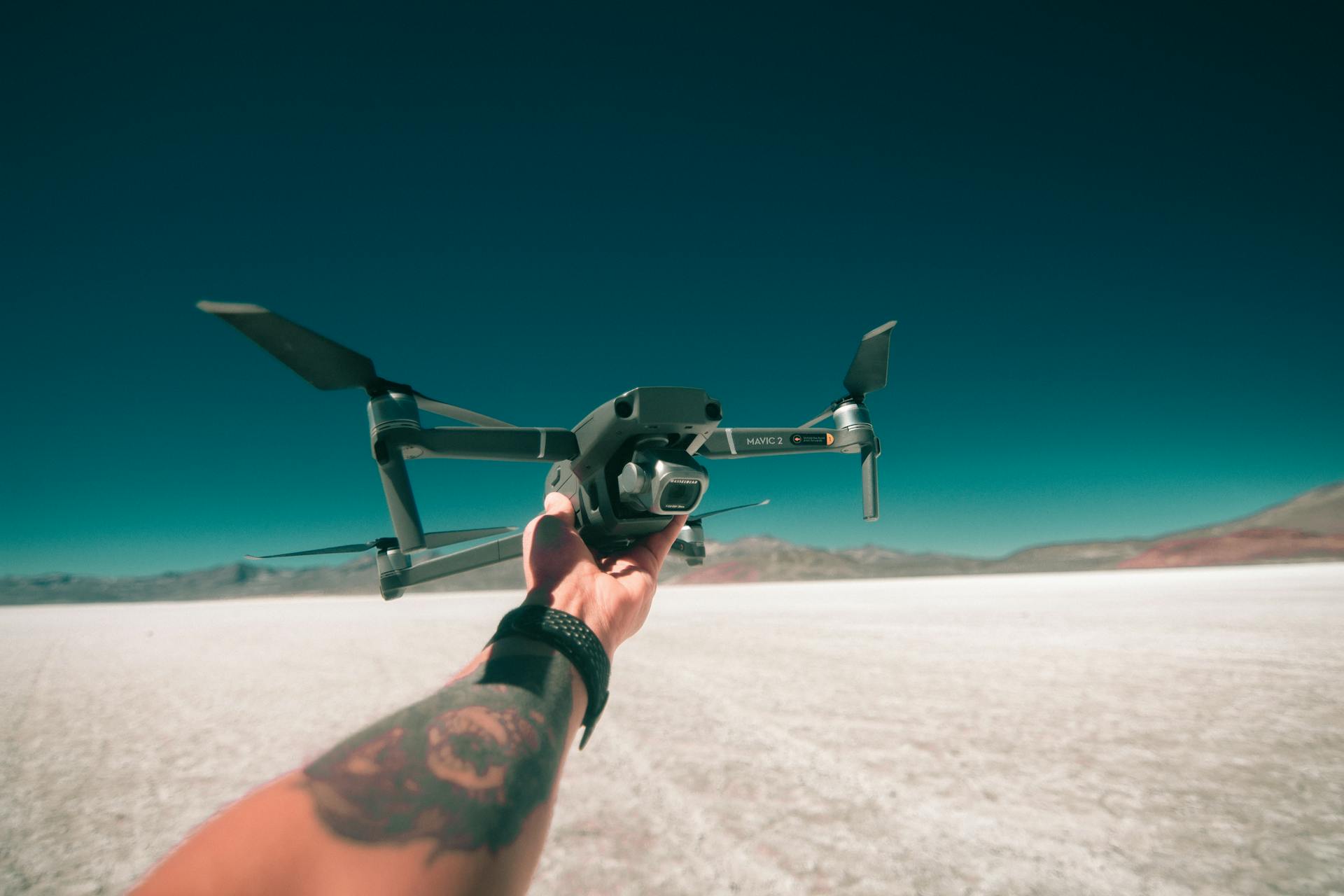How Weather Conditions Impact Drone Performance
Drones are incredible gadgets, capable of breathtaking aerial shots and advanced tasks like surveying and mapping.
Author:Suleman ShahReviewer:Han JuDec 20, 2024138 Shares5.7K Views

Drones are incredible gadgets, capable of breathtaking aerial shots and advanced tasks like surveying and mapping. However, these sophisticated machines are highly sensitive to weather conditions. Their internal components, from sensors to batteries, are not designed to withstand all the elements.
Drones And Weather Sensitivity
Take wind, for example. Even light gusts can disrupt a drone’s flight, making it wobble and impacting its camera’s stability. For heavier winds, drones with limited power may struggle to maintain altitude or position. Most modern drones, like those from Autel, come equipped with stabilization features, but there’s only so much they can handle.
Rain is another major concern. Unlike waterproof action cameras, most drones are not built to resist water. Rain can infiltrate motors, damage wiring, and even cause short circuits in your drone's electronic components. Additionally, moisture can fog up camera lenses or gimbals, reducing the quality of any footage captured during the flight.
Heat presents its challenges too. High temperatures can lead to overheating batteries or motors, risking permanent damage. Prolonged exposure to heat can degrade battery cells over time, shortening flight durations and the battery’s overall lifespan.
Each of these weather conditions brings unique risks that can easily turn a routine flight into an emergency situation requiring repairs – or a replacement altogether.
Tips For Flying In Less-Than-Ideal Conditions
Despite the risks, there are ways to safely navigate tricky weather conditions. Flying in the wind, for example, requires attention to wind speed limits for your specific drone model. Most consumer drones are rated to handle winds up to a certain threshold, typically 10-20 mph. Always check the weather forecast before heading out and consider using apps like UAV Forecast, which provide detailed wind and precipitation data.
Rainy weather, on the other hand, should be avoided altogether. If you must fly, consider investing in a water-resistant drone cover or casing. These accessories won’t make your drone waterproof, but they can buy you some time to land safely in light rain. If you’re caught off guard, bring a microfiber cloth to dry your drone immediately after landing.
Flying in hot weather? Start early in the morning or later in the evening when temperatures are lower. Give your drone and batteries time to cool down between flights, and avoid leaving them in direct sunlight. A reflective landing pad can prevent your drone from overheating when it’s on the ground.
Cold weather introduces its own challenges. To mitigate the effects of freezing temperatures, keep your drone batteries warm until you’re ready to use them. Hand warmers or insulated cases work well for this purpose. During the flight, monitor your battery life more closely than usual, as cold temperatures can drain batteries faster than expected.
Maintenance After Harsh Flights
Flying in tough weather doesn’t just challenge your piloting skills – it also takes a toll on your drone’s health. Proper post-flight maintenance is critical to keeping your device in good condition.
For starters, inspect the exterior for any visible damage, like cracks or loose parts, caused by wind or unexpected impacts. If you’ve flown through rain or fog, dry your drone thoroughly, paying close attention to joints and crevices where moisture could hide.
Cleaning is another essential step. Wipe down the drone with a soft, lint-free cloth to remove dirt or water stains. For areas like the camera lens or sensors, use a microfiber cloth and a small amount of isopropyl alcohol for a gentle clean.
Calibration is equally important after flights in harsh conditions. Sensors can be thrown off by strong winds or extreme temperatures, so recalibrate the compass, IMU (Inertial Measurement Unit), and gimbal. Regular calibration ensures your drone’s navigation systems and stabilization features remain accurate.
Finally, don’t overlook the propellers. Check for chips, cracks, or bends, and replace them as needed. Damaged propellers can compromise the drone’s aerodynamics and cause unstable flight.
Signs Your Drone Needs Repairs
Even with careful maintenance, some weather-induced issues may not be immediately visible. Over time, the strain of flying in challenging conditions can lead to performance problems that require professional attention.
One of the most common signs your drone needs repairs is unstable flight behavior. If your drone starts wobbling, drifting uncontrollably, or struggling to hold its position, it could indicate damage to the motors, propellers, or internal stabilization systems.
Another warning sign is a sudden loss of connection. While brief signal interruptions can happen in poor weather, consistent connectivity issues might point to a damaged antenna or internal wiring.
Battery-related problems are also worth noting. If your drone’s battery drains unusually fast, doesn’t charge properly, or overheats during use, it’s a sign of degradation that could lead to a mid-flight failure.
Unusual noises, like grinding or buzzing from the motors, are another red flag. These sounds could signal that debris has gotten inside the motor housing or that the motors themselves are wearing out.
If you notice any of these issues, it’s time to consult a professional repair service. Prompt repairs not only restore your drone’s functionality but also prevent minor issues from escalating into major problems.
Fly Smart, Fly Safe
Weather is one of the most unpredictable factors in drone operation, and understanding its impact is essential for safe, successful flights. From the disruptive force of wind to the insidious effects of rain, heat, and cold, each condition presents unique challenges that require preparation and care.
By following best practices for flying in less-than-ideal weather and maintaining your drone after every flight, you can extend its lifespan and performance. And if problems arise, recognizing the signs of damage early can save you from costly Autel drone repairbills – or worse, losing your drone altogether.
In the end, a smart, weather-conscious approach to flying will help ensure your drone stays in the air longer, capturing stunning footage and completing missions safely. So next time you plan a flight, take a moment to check the forecast, prepare your gear, and remember: it’s always better to be safe than grounded.

Suleman Shah
Author
Suleman Shah is a researcher and freelance writer. As a researcher, he has worked with MNS University of Agriculture, Multan (Pakistan) and Texas A & M University (USA). He regularly writes science articles and blogs for science news website immersse.com and open access publishers OA Publishing London and Scientific Times. He loves to keep himself updated on scientific developments and convert these developments into everyday language to update the readers about the developments in the scientific era. His primary research focus is Plant sciences, and he contributed to this field by publishing his research in scientific journals and presenting his work at many Conferences.
Shah graduated from the University of Agriculture Faisalabad (Pakistan) and started his professional carrier with Jaffer Agro Services and later with the Agriculture Department of the Government of Pakistan. His research interest compelled and attracted him to proceed with his carrier in Plant sciences research. So, he started his Ph.D. in Soil Science at MNS University of Agriculture Multan (Pakistan). Later, he started working as a visiting scholar with Texas A&M University (USA).
Shah’s experience with big Open Excess publishers like Springers, Frontiers, MDPI, etc., testified to his belief in Open Access as a barrier-removing mechanism between researchers and the readers of their research. Shah believes that Open Access is revolutionizing the publication process and benefitting research in all fields.

Han Ju
Reviewer
Hello! I'm Han Ju, the heart behind World Wide Journals. My life is a unique tapestry woven from the threads of news, spirituality, and science, enriched by melodies from my guitar. Raised amidst tales of the ancient and the arcane, I developed a keen eye for the stories that truly matter. Through my work, I seek to bridge the seen with the unseen, marrying the rigor of science with the depth of spirituality.
Each article at World Wide Journals is a piece of this ongoing quest, blending analysis with personal reflection. Whether exploring quantum frontiers or strumming chords under the stars, my aim is to inspire and provoke thought, inviting you into a world where every discovery is a note in the grand symphony of existence.
Welcome aboard this journey of insight and exploration, where curiosity leads and music guides.
Latest Articles
Popular Articles